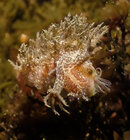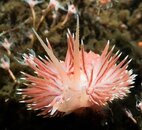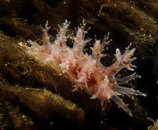CharlieDontDive
Contributor
I am looking for some feedback on how to improve my UW photography, specifically in terms of camera settings. I recently upgraded from an Intova X2 to the SeaLife DC2000 with the SeaLife "Sea Dragon" strobe. I just took this camera on a dive for the first time today and I'm dissatisfied with the quality of the photos. I know the camera is capable of better pictures than this but I need some assistance in doing so: SeaLife DC2000 at Dutch Springs
Current camera/strobe settings:
The photos were taken at Dutch Springs in PA. I am aware that limited ambient light and relatively poor visibility mean there are limits to what any camera can achieve. I'm soliciting feedback and assistance so that I can hopefully make some tweaks to the camera settings before taking it to the Algol wreck off NJ in 2 weeks.
I am certainly open to suggestions about actual photography techniques but currently I'm most interested in making sure my camera and strobe settings are ideally set. I don't have any formal training in UW photography but I have a general understanding of the principles involved.
Thank you!
Edit: It's worth noting that my favorite photography subjects are wrecks and underwater landscapes. Given the wide angles & distances required, I am aware that this is tough to do...
Current camera/strobe settings:
- Flash brightness (dial on strobe): "Automatic" ("A")
- Scene Mode: "External Flash"
- ISO: "Auto"
- EV: "Auto"
- White Balance: "Auto"
- Flash Setting: "External Flash"
- Manual exposure controls: not used
The photos were taken at Dutch Springs in PA. I am aware that limited ambient light and relatively poor visibility mean there are limits to what any camera can achieve. I'm soliciting feedback and assistance so that I can hopefully make some tweaks to the camera settings before taking it to the Algol wreck off NJ in 2 weeks.
I am certainly open to suggestions about actual photography techniques but currently I'm most interested in making sure my camera and strobe settings are ideally set. I don't have any formal training in UW photography but I have a general understanding of the principles involved.
Thank you!
Edit: It's worth noting that my favorite photography subjects are wrecks and underwater landscapes. Given the wide angles & distances required, I am aware that this is tough to do...







